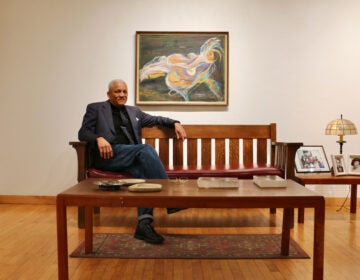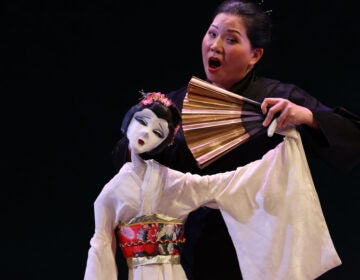Design for Philly’s new Harriet Tubman statue unveiled
The statue shows the fierce abolitionist and former slave as a reverent warrior for liberation.
Listen 1:12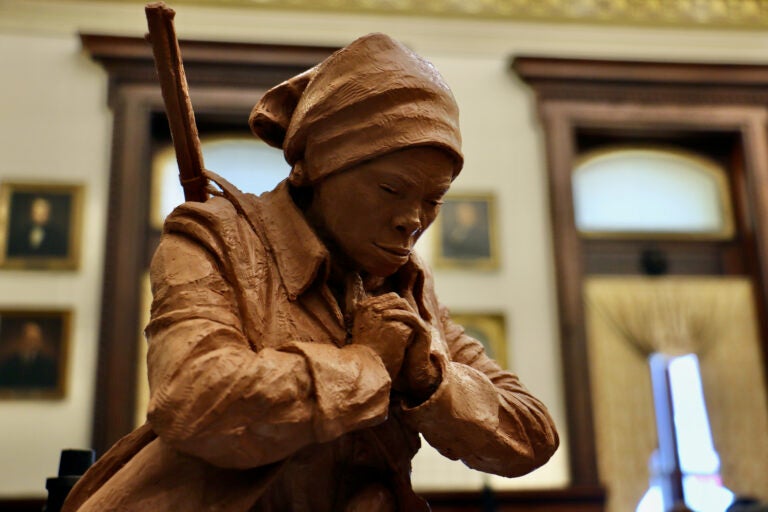
The hands of Alvin Pettit's Harriet Tubman statue are folded in prayer, or perhaps clenched. (Emma Lee/WHYY)
Alvin Pettit’s design for Philadelphia’s permanent statue of Harriet Tubman shows her standing steadfast against strong headwinds, her fists clenched in prayer.
Unlike the temporary statue that was once on the apron of City Hall that showed her leading children in flight toward freedom, the new statue shows her preparing to face her foes.
“This woman was a soldier, a scout, a union spy, a military strategist, and a war hero,” said Pettit. “Therefore I captured a moment in time that shows her as a conqueror.”

The sculpture will be called “A Higher Power: The Call of a Freedom Fighter.” It was unveiled as a clay maquette about 18 inches tall. The winning design was selected from five finalists in a year-long process. Pettit’s Tubman will be larger-than-life — about 10 feet tall — on a base that will lift the sculpture to about 15 feet in height. It is expected to be completed in 2025.
“I leave it to the viewer’s imagination to determine what she is contemplating at this moment,” said the Baltimore-born, Jersey City-based artist. “Perhaps she is calling upon her faith, or experiencing an episode of one of her prophetic visions, or maybe she is preparing for another battle since, at a closer observation, her hands are in a clutch fist position.”
Pettit’s Tubman is also heavily armed: she has a pistol at her waist, a sword in a scabbard, and a rifle slung across her back. Pettit said the image was inspired by the 1863 Raid on Combahee Ferry during the Civil War, when Tubman led a force of 150 Black soldiers to free about 750 enslaved people to waiting Union ships.
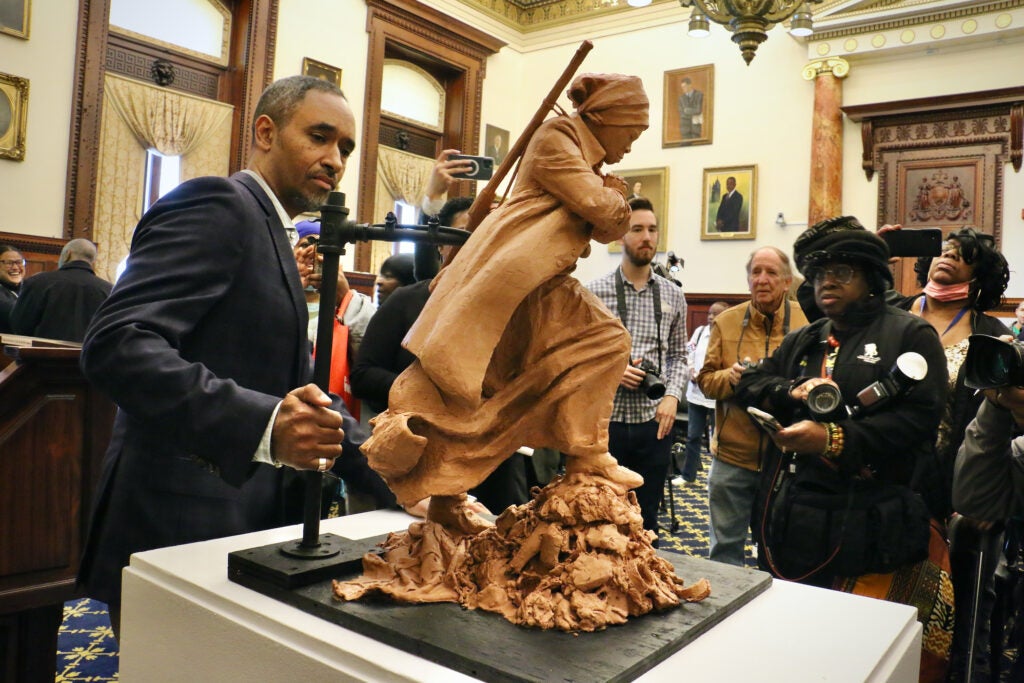
The sculpture will be Philadelphia’s only statue of a historic Black woman (Simone Leigh’s “Brick House” at the University of Pennsylvania depicts an imagined, abstract Black woman figure), and it comes after controversy.
In 2022, the city invited artist Wesley Wofford to temporarily place his Tubman statue “The Journey to Freedom” on the northeast apron of City Hall. Wofford had designed his statue to be toured; it has been in 18 cities since 2020.
Inspired by the positive reaction it received by the public, Mayor Jim Kenney wanted the artist to make another Tubman statue that would be permanent. But when the city’s Office of Arts Culture and the Creative Economy asked Wofford, who is white, to come up with a design, there was backlash from the public who wanted the selection process to be open to more artists.
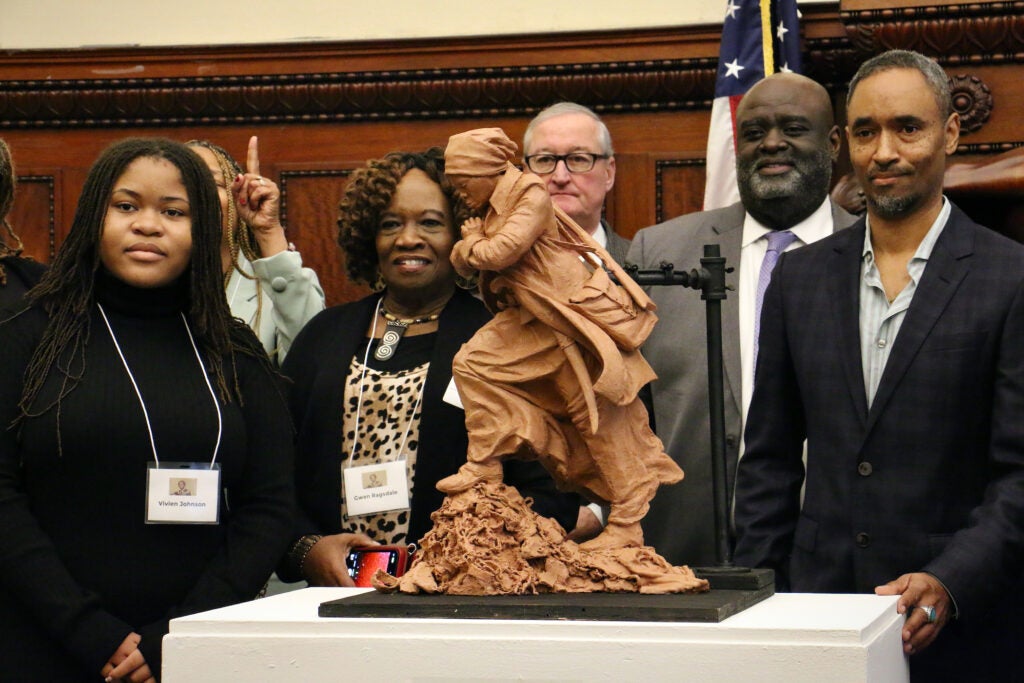
In virtual public meetings, some attendees demanded the opportunity to make the Tubman statue should be extended to Black artists. The commission to Wofford was canceled and a selection committee was formed to find a different artist.
“I loved the traveling statue. I loved it and I was angry when this controversy started about an open call,” said Mayor Kenney.
“In the end, we will love this statue,” he said, pointing to the Pettit maquette. “It will be ours. Not a traveling statue. It would be a permanent statue.”
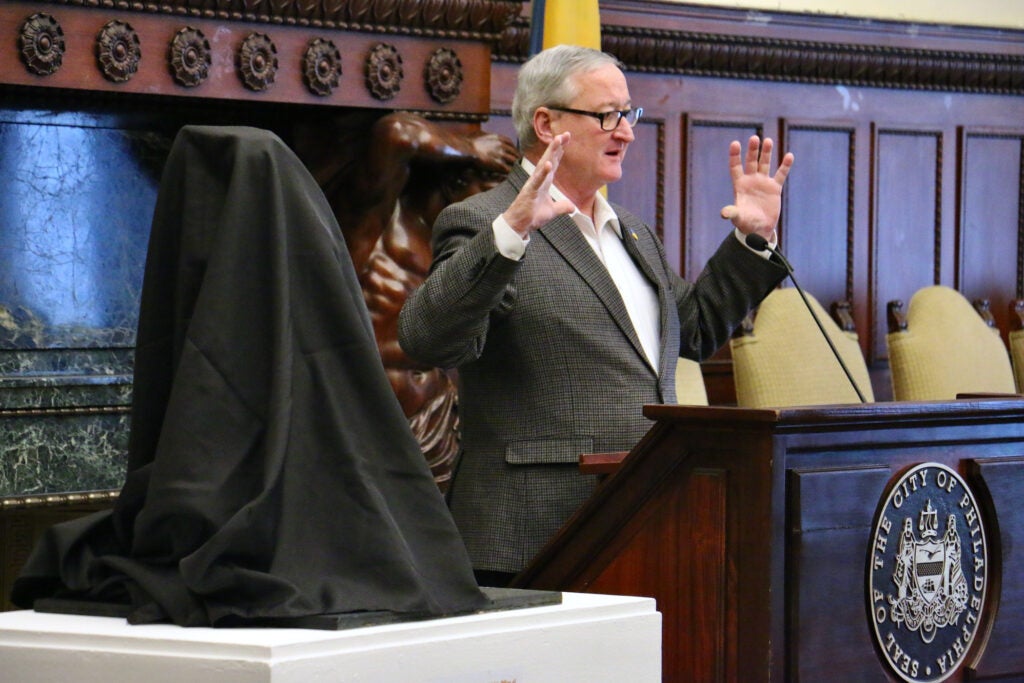
During the unveiling, Kenney, who was not part of the selection process, admitted that the Pettit proposal was his favorite, and when he learned it was selected he pumped his fist.
The selection committee of 16 people included descendants of Tubman. Danetta Green Johnson, of Dover, Del., can trace her lineage back to Tubman and was pleased the statue showed her ancestor in prayer.
“All the artists did an awesome job, but this one stood out because her hands were clutched here,” she said, holding her hands to her chest. “It means that she had faith in Jesus Christ in order to help her through. Alvin constructed this piece of artwork with so many details of her life. It is a journey of an artwork that is going to go down in history, today and forever, from one generation to the other.”
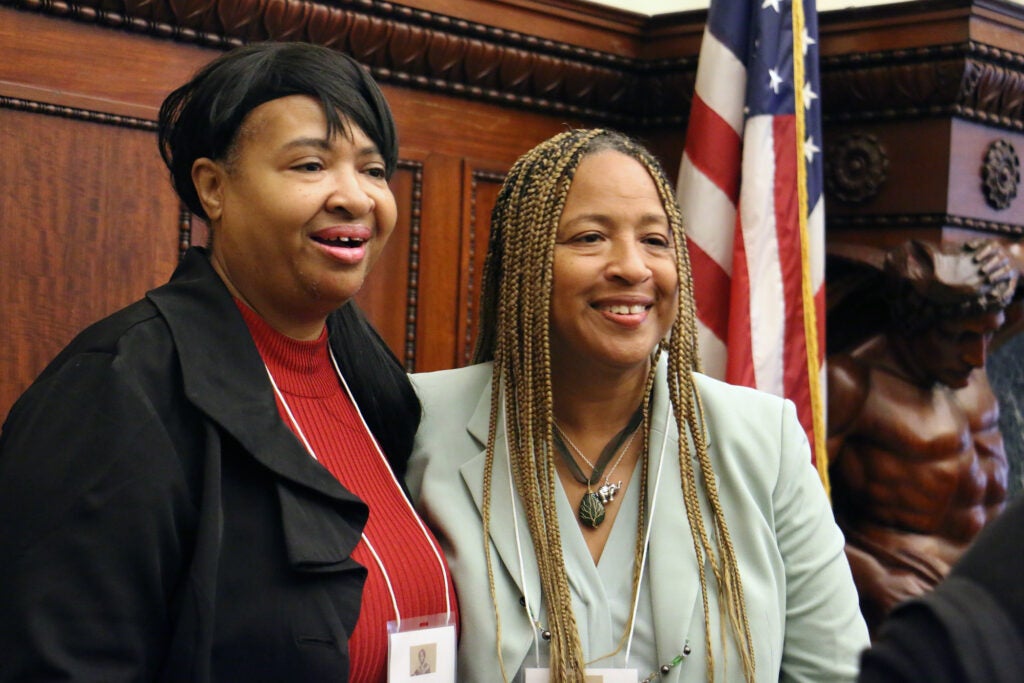
Pettit said his figure of Tubman is loosely based on a painting of George Washington during the Revolutionary War, “A Prayer in Valley Forge” (1975) by Arnold Friberg. In it, Washington is seen in uniform kneeling in the snow at Valley Forge alongside his white horse, his head bowed into his clasped hands.
“I thought it was only fitting to use the image of this nation’s first president, who was also unfortunately a slave owner,” Pettit said. “And reimagined it with the image of a Black woman who was formerly enslaved and then became our country’s greatest liberator.”
Mayor Kenney has begun the process of creating several statues of Black historical figures, including Octavius Catto (installed in 2017), the Harriet Tubman, a statue of singer Marian Anderson that will be coming to South Broad Street, and a statue of Julian Abele, the city’s first high-profile Black architect credited with designing the Philadelphia Museum of Art building.
WHYY is your source for fact-based, in-depth journalism and information. As a nonprofit organization, we rely on financial support from readers like you. Please give today.



